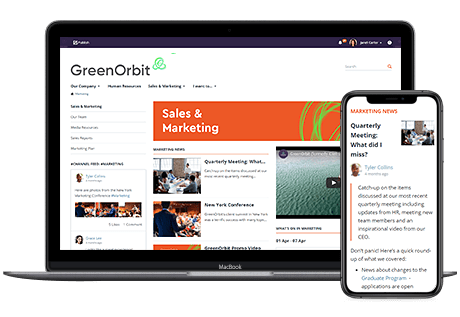

Storytelling is a skill as old as time. Stories stimulate imagination and create a sense of community amongst readers. We are constantly surrounded by stories, whether in films, books, history, news articles, or conversations with friends and family. Stories are how we learn, grow, and bond with others.
It’s the same in the commercial world. With the rise of remote work and globalization, business environments are more fragmented and isolated. With their ability to captivate our attention and build empathy, stories are powerful mediums for engaging your workforce. It’s a communication skill that can keep workers in an organization connected and informed.
Stories can be used to amplify a message and make it more memorable. These competencies are especially important when uniting employees behind a company vision, strengthening culture, or issuing change management communications.
Pretty much the same as a fictional story, you’ll need:
An employee, a senior manager, a team, a customer. Or multiples of these
The time and place in which it happens.
Series of events and actions that relate to the story’s hook
A task or challenge to be delivered or overcome that compels us to keep reading the story till the end.
It could be a value, competency, goal or strategy, either personal or business
A strong narrative voice pulls it all together. Using details and examples to really drive the story home and make the reader feel a part of what’s happening.
Stories act as a medium for passing on values and creating vision.
Personal stories can communicate ability and commitment, as well as conveying openness. Organizational stories influence the perceived trustworthiness of the business and its management.
Enables the communication of tacit knowledge [what’s in employees’ heads] educating staff surreptitiously. They will improve information retention more than standalone facts and figures.
Unlearning often requires more than rational arguments. It needs an intuitive and emotional anchor. Stories can provide a medium for enforcing something that is outdated or wrong.
We connect with stories emotionally and a story that has had an impact on us will be easily recalled long into the future. They can help rethink biases, and change minds
The more open you are in your storytelling for internal communications, the more likely your workers are to believe in what you say. And they’ll not shy away from lending their support. This is especially important for senior leaders and upper management.
You need to make sure that your stories are balanced. Tell a story about what's not working, how you listened to your employees, and how you think you’ve fixed it. Honesty is the best policy, and readers will give you more credibility for being so.
In the corporate world, simple and straightforward storytelling is a must. Whether you’re sharing a story about your vision for the company’s future, or looking back at its history, it’s important to avoid jargon and corporate language where possible. Complex language makes for an unfriendly and detached story that won’t do much to make your employees feel relatable or empathetic. Instead, opt for simple, engaging language.
A picture tells a story just as well as, if not better than, a lot of written words. An image has the ability to convey narrative, ideas and messages. Video and images offer a way to liven up an otherwise dull content. Concepts that would have been conveyed using plain text can be explored more broadly and in a more entertaining way, increasing engagement
The longer you wait to publish a story about something recent the less impact it will have. What your workers want to see are genuine stories happening in real-time. It gives them the opportunity to be react in a timely manner.
Storytelling doesn’t have to be for a particular type of communication, although achievements and successes are important, stories can also be:
Make it a super simple process to publish a story, make it available for everyone to do so and where necessary follow an approval process. The GreenOrbit news feature makes it easy for content creators to publish engaging stories, using
The benefits of storytelling are endless and can take the communications of your company to the next level. Communicating employee and leader stories is more than just a method to amplify important messages: it is a medium for connecting people at all levels. That connection leads to an empathetic understanding that is more powerful than the most logical and conventional communication means. Storytelling makes messages stick, and that power can be a crucial weapon in your internal communication strategy.
Want to know more about GreenOrbit Intranet makes it easy to facilitate storytelling, contact a consultant for a personalized demo. https://greenorbit.com/book-a-demo/

